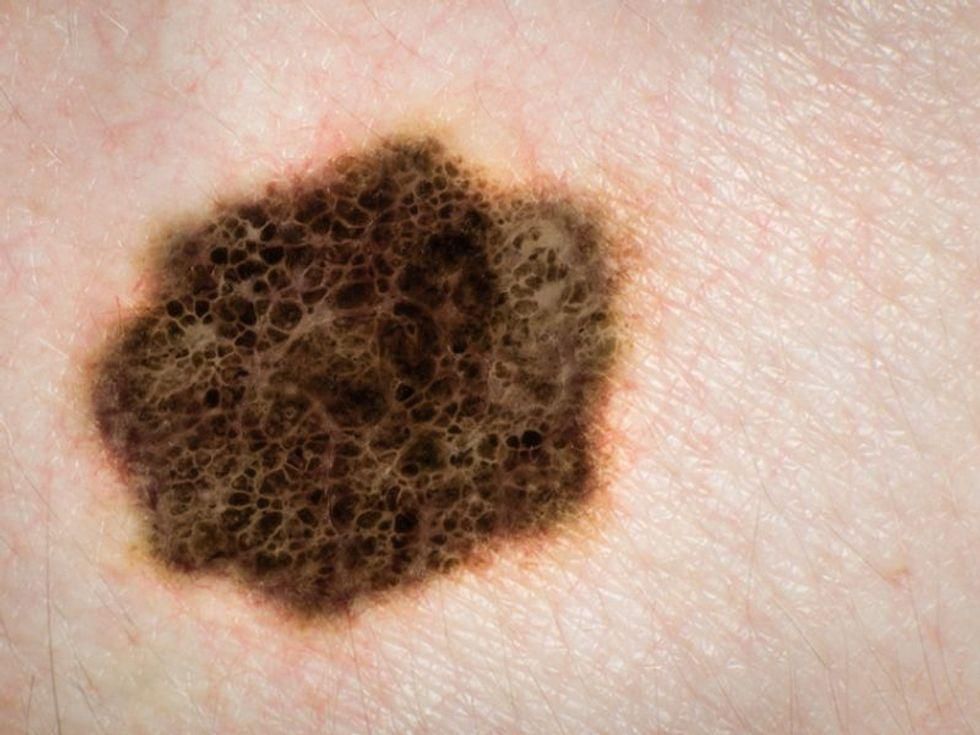
Skin cancer can pop up anywhere on your skin, including the soles of your feet and even under your fingernails.
That’s what happened to Isabel Lievano, who was diagnosed with melanoma when her dermatologist determined that a persistent black spot under her fingernail was the deadliest form of skin cancer.
Lievano, 69, lost her nail, but not her finger or her life.
“Skin cancer is the most common form of cancer in the United States. Anyone can get skin cancer, which is why Isabel’s story shows how important it is to perform a skin self-exam,” said board-certified dermatologist Dr. Hope Mitchell, who is in private practice in Ohio. “Checking your skin can help catch skin cancer early when it’s highly treatable. I encourage my patients to regularly check their skin for anything that is new or changing.”
Mitchell recommended a skin self-exam using what are called the ABCDEs of melanoma.
A is for asymmetry, in which one half of the spot is unlike the other.
B is for border, which can be irregular, scalloped or poorly defined.
C is for color, which can vary from one area to the next with shades of tan, brown or black or areas of white, red or blue.
D is for diameter. Melanomas are usually greater than 6 mm, or about the size of a pencil eraser, when diagnosed. But they can be smaller.
E is for evolving. The spot looks different from the rest or is changing in size, shape or color.
This video walks you through a skin cancer self-exam:
It’s also important to check for other types of skin cancer: basal cell carcinoma, which is the most common; and squamous cell carcinoma, a type that grows slowly and deeply.
Basal cell carcinoma can be a dome-shaped growth; a shiny, pinkish area; a black or brown growth; a white or yellow waxy growth; or a sore that heals then returns.
Squamous cell carcinoma can be a crusted or rough bump; a red, rough flat area; a dome-shaped bump that grows and bleeds; or a sore that either does not heal or heals and returns.
While doing a skin self-exam, look at all the spots you see on your body, including moles, freckles and age spots. You can get skin cancer anywhere, including the palms of your hands, soles of your feet, mouth, eyes, genitalia and buttocks.
In darker skin, it is more likely to develop in areas that aren’t exposed to the sun, such as under or around your nails, palms or soles.
Mitchell recommends using these tips to check your skin:
- Examine your body front and back in a full-length mirror. Look at the right and left sides with your arms raised.
- Bend your elbows and look carefully at your forearms, underarms, fingernails and palms of your hands.
- Look at the backs of your legs and feet, including the spaces between your toes, your toenails and the soles of your feet.
- Examine the back of your neck and scalp with a hand mirror. Part your hair for a closer look at your scalp.
- Also check your back and buttocks with a hand mirror.
“Make sure to record the spots on your skin and nails, including the location of the spot and whether it has changed,” Mitchell said in an American Academy of Dermatology news release. “Ask someone for help when checking your skin, especially in hard-to-see places like the scalp and back. If you notice a spot on your skin that is different from the others or that changes, itches or bleeds, make an appointment to see a board-certified dermatologist.”
More information
The U.S. National Library of Medicine has more on skin cancer screening.
SOURCE: American Academy of Dermatology, news release, May 31, 2023
Source: HealthDay
Copyright © 2024 HealthDay. All rights reserved.

Leave a Reply